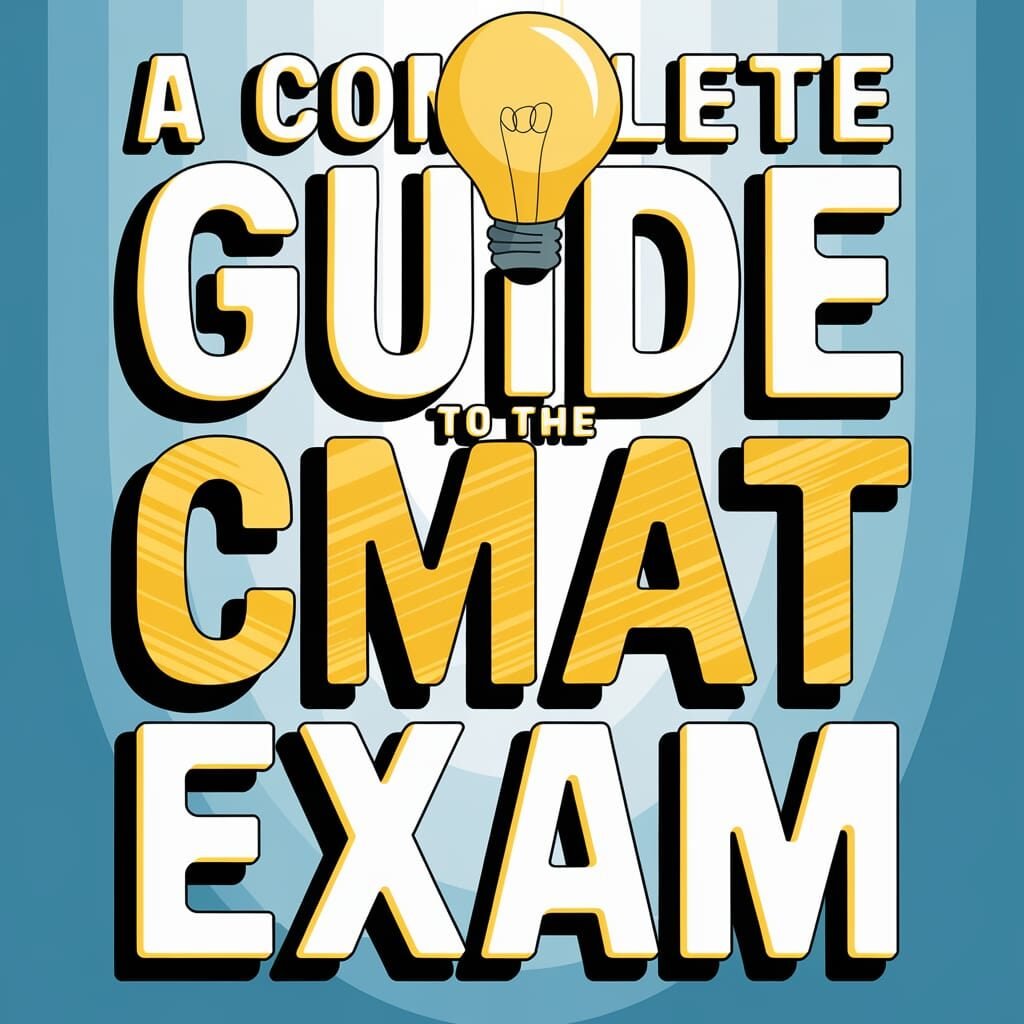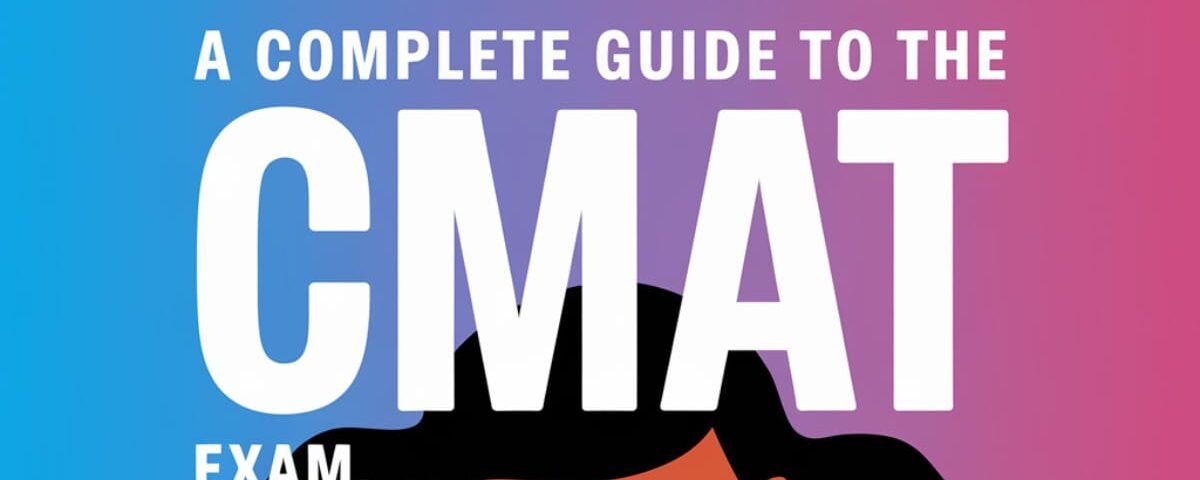- How may I help you?
- 8233970000
- 9829016449
- info@ipsedu.in
The complete guide to the CMAT exam.
The Common Management Admission Test (CMAT) is a three-hour entrance exam designed to select qualified candidates for admission into management programs. The National Testing Agency (NTA) conducts the CMAT for MBA/PGDM courses.
Every year, around 70,000 candidates apply for the exam. Performing well on the CMAT is crucial for securing a place in a Master of Business Administration (MBA) or Postgraduate Diploma in Management (PGDM) program, which can lead to lucrative career opportunities.
To begin, it’s important to understand what the CMAT exam is and why it holds significance.
What advantages come with taking the CMAT exam?
One advantage is that many MBA colleges in India recognize the CMAT scores. The exam’s difficulty level is moderate, meaning it doesn’t require extensive preparation. Additionally, women and candidates from reserved categories receive a discounted application fee.
Eligibility requirements
Educational Qualification:
Applicants must hold a Bachelor’s degree (in any discipline) from a recognized university or institution.
The degree should be completed before the application deadline.
Final-year undergraduate students can also apply, provided they complete their degree by the time of admission.
Age Limit:
There is no upper age limit for CMAT.
Nationality:
Candidates must be Indian citizens.
Number of Attempts:
There is no restriction on the number of attempts; candidates can appear for CMAT as many times as they wish.
The application requirements for CMAT (Common Management Admission Test) are as follows:
- Valid Government-Issued ID:
- You must submit details of a government-issued ID, such as:
- Aadhaar number (last four digits)
- Election card (EPIC)
- Passport number
- Or any other valid ID with a date of birth mentioned.
- You must submit details of a government-issued ID, such as:
- Educational Qualification Details:
- You need to provide information about your educational background, including your Bachelor’s degree or equivalent.
- Photograph:
- A recent passport-sized photograph (either color or black and white) that shows at least 80% of your face.
- Masks should not be worn in the photograph.
- Signature:
- A clear scan of your signature in JPEG format.
- Bank Account Details:
- You will need your bank account details to complete the payment.
- Valid Email Address:
- A working email address to receive updates and important notifications.
- Test Centre Preferences:
- You need to select your preferred test centre location. CMAT is held in 124 cities across India, and you can select up to four centres. Once you submit the application, the location cannot be changed.
- Payment Information:
- Payment details for the application fee.

Additional Considerations:
- Ensure all fields are filled out correctly, as incomplete applications can be rejected.
- Review the application instructions carefully, as there may be changes depending on the test date.
CMAT syllabus
The CMAT (Common Management Admission Test) syllabus generally covers four major sections, each focusing on specific areas of knowledge and skills. Here’s a breakdown of the CMAT syllabus:
1. Quantitative Techniques and Data Interpretation
This section evaluates your ability to solve mathematical problems and interpret data. Topics include:
- Arithmetic (Percentages, Ratio and Proportion, Profit and Loss, Time and Work, Time and Distance)
- Algebra (Linear and Quadratic Equations, Logarithms, Functions)
- Geometry (Mensuration, Lines and Angles, Circles)
- Trigonometry
- Data Interpretation (Tables, Bar Charts, Line Graphs, Pie Charts)
- Probability and Permutations & Combinations
2. Logical Reasoning
This section tests your ability to think critically and logically. Topics include:
- Blood Relations
- Syllogisms
- Venn Diagrams
- Direction Sense Test
- Analytical Reasoning
- Series Completion
- Coding-Decoding
- Logical Sequencing
- Puzzles
- Statement and Assumptions
3. Language Comprehension
This section assesses your proficiency in English language skills. Topics include:
- Reading Comprehension (Passages followed by questions)
- Synonyms and Antonyms
- Sentence Correction
- Word Usage
- Para-jumbles (Sentence Rearrangement)
- Fill in the Blanks
- Grammar (Tenses, Parts of Speech, Prepositions)
4. General Awareness
This section tests your knowledge of current affairs, general knowledge, and the world around you. Topics include:
- Current Affairs (National and International)
- Business and Economy
- Sports
- Science and Technology
- Politics
- Culture
- History
- Geography
- Important Awards and Recognitions
- Books and Authors
Key Points:
- Total Duration: 3 hours (180 minutes)
- Total Questions: 100 multiple-choice questions (MCQs)
- Marking Scheme: 4 marks for each correct answer and a negative marking of 1 mark for each incorrect answer.
The CMAT syllabus is designed to assess the fundamental abilities needed for management studies, such as analytical thinking, problem-solving, and language proficiency. Make sure to check the official CMAT website for any updates on the syllabus before starting your preparation.
Appearing for the test
When appearing for the CMAT exam, it’s essential to follow the guidelines to ensure a smooth testing experience. Here are the key requirements for the day of your test:
1. Admit Card:
- Mandatory: You must bring the original CMAT admit card to the test centre. Photocopies or digital copies of the admit card will not be accepted.
- Denial of Entry: Without the admit card, you will not be allowed to take the exam.
2. Test Centre Timing:
- Arrive at the test centre on time. Ensure that you reach the venue well before your scheduled exam time to avoid any last-minute rush.
3. Prohibited Items:
- No electronic devices: Mobile phones, smartwatches, Bluetooth devices, or any other electronic gadgets are strictly not allowed in the exam centre.
- Lockers: Some centres may provide lockers for storing personal items like coats or bags. However, it’s safer to leave electronics at home or in your vehicle to avoid any issues.
4. Additional Identification:
In addition to the admit card, you need to carry one of the following forms of ID:
- Aadhaar card
- PAN card
- Passport
- Driver’s license
- College/University ID card
- Voter ID card
Other Tips:
- Double-check the details on your admit card to ensure everything is correct, including your exam centre and timing.
- Keep your identification documents ready in advance to avoid delays on the exam day.
Following these instructions ensures that you have a smooth and successful exam experience.
How to prepare for the CMAT?
Preparing for the CMAT (Common Management Admission Test) requires a structured approach, as it tests a wide range of skills, including quantitative ability, logical reasoning, language comprehension, and general awareness. Here’s a step-by-step guide to help you prepare effectively for the CMAT:
1. Understand the Exam Pattern and Syllabus
- Familiarize yourself with the CMAT exam pattern and syllabus to know what to expect.
- The test consists of four sections: Quantitative Techniques & Data Interpretation, Logical Reasoning, Language Comprehension, and General Awareness.
- Understand the number of questions, time allotted for each section, and the marking scheme (4 marks for each correct answer, -1 mark for incorrect answers).
2. Create a Study Plan
- Set a timeline: Dedicate a certain number of months or weeks for preparation, depending on how much time you have before the exam.
- Divide your study time: Allocate time for each subject based on your strengths and weaknesses. Focus more on areas you find challenging.
- Make a daily schedule: Stick to a routine, balancing study time, practice, and revision.
3. Strengthen Core Concepts
- Quantitative Ability:
- Practice basic arithmetic, algebra, geometry, and data interpretation.
- Focus on problem-solving speed and accuracy.
- Logical Reasoning:
- Work on puzzles, series completion, syllogisms, and seating arrangements.
- Solve a variety of reasoning questions to build problem-solving abilities.
- Language Comprehension:
- Read newspapers, books, and articles regularly to improve vocabulary and reading speed.
- Practice solving reading comprehension passages and focus on grammar, sentence structure, and vocabulary.
- General Awareness:
- Stay updated on current affairs, especially in business, economics, politics, sports, and science.
- Read newspapers, magazines, and online resources for the latest news and events.
4. Take Mock Tests and Practice Papers
- Mock tests: Take regular mock tests to simulate the actual exam experience. This will help you with time management, question selection, and reducing exam stress.
- Sectional tests: Focus on sectional mock tests to target specific sections that you need to improve.
- Analyze your performance: After each test, review your mistakes and understand areas where you need improvement. Aim to reduce errors over time.
5. Improve Speed and Accuracy
- Time management is crucial during the CMAT. Practice solving questions quickly without compromising on accuracy.
- Use techniques like elimination to answer questions faster and reduce mistakes.
- Set a timer while practicing to get used to the time constraints of the real exam.
6. Revise Regularly
- Regular revision: Set aside time for periodic revision of the topics you’ve already covered. This will reinforce your memory and improve recall during the exam.
- Formula sheets: Create a quick reference sheet with important formulas, concepts, and shortcuts, especially for quantitative sections.
7. Stay Updated for Current Affairs
- Follow reliable sources for current affairs updates, such as newspapers, news websites, and apps.
- Pay special attention to business and economic news, as well as major events in politics, sports, and technology.
8. Focus on Mental and Physical Well-being
- Avoid burnout: Take regular breaks during study sessions and maintain a healthy balance between work and rest.
- Exercise and relax: Keep stress levels low by incorporating relaxation techniques like meditation, deep breathing, or physical exercise into your daily routine.
9. Last-Minute Preparation Tips
- In the last few days before the exam, focus on revising key concepts and formulas.
- Avoid learning new topics at the last minute; instead, focus on strengthening what you already know.
- Ensure a good night’s sleep before the exam day.
By following a systematic preparation strategy and maintaining consistency, you’ll be well-prepared to perform confidently on the CMAT exam day.
After the Test
Once the CMAT exam has concluded, the NTA (National Testing Agency) follows these steps:
- Release of Answer Key:
- The NTA will publish the exam answer key at a specific time, which will be made available on their official website.
- Challenging the Answer Key:
- If you believe any answer in the key is incorrect, you can challenge it.
- The NTA charges a fee for submitting a challenge, but if your challenge is accepted, the fee will be refunded.
- Scoring and Results:
- The NTA will post the final scores on its website after processing all challenges.
- Scoring Details:
- Correct answers: Each correct answer earns 4 marks.
- Incorrect answers: Each incorrect answer results in a penalty of 1 mark.
- Unanswered questions: No marks are deducted for questions that you leave unanswered.
These steps ensure a transparent and fair evaluation process for all candidates who appear for the CMAT exam.





